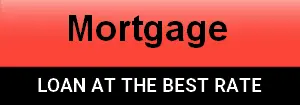Rental yield calculation: the 10 essential things you must know

- Introduction to rental yield
- Difference between rental yield and cash flow
- Calculation of rental yield based on financing
- Impact of acquisition and maintenance costs on profitability
- Tax rates and taxation of rental yield
- Vacancy and default risks
- Property location
- Mortgage leverage effect
- Real estate investment: Long term vs short term
- Investment sensitivity analysis and scenarios
- Purpose
- FAQ
What is rental yield
Before discussing how to calculate rental yield, it is important to understand what it is and what it is used for. Rental yield is a key indicator in the field of real estate investment. It represents the percentage return on investment that an owner can expect from a rental property. In other words, it measures the income generated by a property relative to its acquisition cost. This Swiss real estate yield is essential for investors as it allows them to evaluate the potential profitability of an investment, compare different properties, and make informed decisions.
For an investor, understanding rental yield is crucial. It helps not only to make an informed investment, but also to anticipate future performance of their property portfolio. Indeed, a good understanding of this concept can lead to wiser investment choices, better property management, and maximization of income. Thus, rental yield is often considered the cornerstone of a successful real estate investment strategy.
Difference between yield and cash flow
Definition of cash flow
Cash flow refers to the amount of money left after paying all expenses associated with a property. This includes operating costs, maintenance fees, taxes, and mortgage repayments. In other words, cash flow is the true measure of liquidity generated by a property. A positive cash flow means that the investment generates enough income to cover all expenses, with a surplus that can be reinvested or used for other needs.

Comparison between yield and cash flow
Although rental yield and cash flow are often used interchangeably, they represent different concepts. Swiss real estate yield focuses on the percentage of income relative to the total investment, whereas cash flow measures the liquidity available after all expenses. For example, a property may show a high rental yield but have a negative cash flow if expenses are excessive. Thus, it is essential for investors to consider both aspects when evaluating a potential real estate investment.
Calculation of rental yield based on financing
Gross yield vs net yield
Rental yield can be calculated in two ways: gross and net. Gross yield is calculated by dividing the annual rent by the acquisition cost of the property. This calculation does not take into account the costs associated with the property, but it provides a first indication of profitability. Net yield, on the other hand, considers all expenses, including management fees, taxes, and maintenance costs, giving a more realistic picture of the profitability of a Swiss real estate investment.
Impact of financing method on yield
The financing method of a property can also influence Swiss real estate yield. For example, a Swiss real estate investment financed by a fixed or variable mortgage loan can generate a better net yield thanks to leverage. However, it is critical to consider the cost of debt, which can reduce cash flow and increase financial risk. An investor must therefore carefully assess the implications of each financing option before making a decision.
Impact of acquisition and maintenance costs
Acquisition costs: notary, registration, etc.
The acquisition costs of a property can vary considerably in Switzerland. Costs such as notary fees, registration fees, and real estate transaction taxes can add up quickly. These expenses must be factored into the yield calculation, as they directly affect the profitability of a Swiss real estate investment. Ignoring these costs can give a misleading picture of rental yield, leading to inappropriate investment decisions.
Maintenance costs and their impact on yield
Maintenance costs are another critical variable to consider. They include everything from minor repairs to regular upkeep and major renovations. If these costs are not well managed, they can significantly reduce net yield and lead to negative cash flows. To maintain a healthy rental yield, investors must budget for maintenance and repairs, taking into account the general condition and location of the property.
Tax rates and taxation of yield
Taxation of rental income in Switzerland
In Switzerland, rental income is subject to income tax. The tax rate varies depending on location and the investor’s overall income. It is important for property owners to understand their tax obligations and how they can affect the net yield of their investment. Generally, rental income is added to other income to determine total taxable income, which can lead to higher tax rates depending on tax brackets.
Tax optimization strategies
To maximize net yield, investors should explore tax optimization strategies. This may include using deductions such as maintenance expenses, mortgage interest, and management fees. By considering all possible deductions, investors can reduce their taxable base and thereby increase their net yield. It is often advisable to consult a tax expert to ensure that all optimization opportunities are explored and properly implemented.
Vacancy and default risks
Impact of vacancy on Swiss real estate yield
Vacancy represents the time during which a property remains unoccupied, which can significantly impact rental yield. A high vacancy rate means less rental income, which can compromise cash flow and net yield. To minimize this risk, investors should implement effective marketing strategies and offer attractive rental conditions to attract tenants. Good property management is also essential to reduce vacancy.
Managing default risks
Rent defaults are another risk faced by property investors. A tenant who does not pay rent can cause financial difficulties, directly affecting cash flow and the profitability of your Swiss real estate investment. To limit this risk, it is essential to conduct thorough tenant background checks, establish solid lease contracts, and set up efficient collection processes. Additionally, having a cash reserve can help cover periods of potential defaults.
Property location
Importance of location in rental yield
The location of a property is often considered one of the most determining factors for its rental yield. Properties located in high-demand areas, such as city centers or developing neighborhoods, tend to have higher occupancy rates and can command higher rents. Additionally, factors such as transport accessibility, proximity to schools, and shops can influence a property’s desirability and consequently its yield.

Criteria for choosing a favorable location
To choose a favorable location, investors must examine several criteria. This includes demographic trends, the region’s economic development, rental supply and demand, as well as the quality of infrastructure. By conducting a thorough analysis of these factors, investors can better anticipate the future performance of their Swiss real estate investment and increase their chances of success in the property market.
Mortgage leverage effect
Definition of leverage effect
The leverage effect refers to the use of debt to finance a Swiss real estate investment, allowing an investor to acquire a property without having to pay the full purchase price with their own funds. This can increase the return on invested capital, as the investor makes gains on a larger asset value. However, leverage also carries risks, including the risk of over-indebtedness if rental income does not cover debt payments.
Advantages and risks of leverage effect
The advantages of leverage mainly lie in the possibility of increasing the return on invested capital. For example, an investor who finances their property purchase with a mortgage loan can realize significant gains if the property’s value increases. However, it is also essential to manage the risks of leverage. A declining real estate market or cash flow problems can quickly turn a promising investment into a financial burden. Thus, a prudent financing strategy is crucial to maximize benefits while minimizing risks.
Long-term vs short-term investment
Characteristics of Swiss real estate long-term investment
Long-term investment involves holding a property for several years, often hoping to benefit from value appreciation and stable rental income. This type of investment can offer several advantages, including greater financial stability and less volatility compared to short-term investments. Long-term investors can also benefit from leverage and a more relaxed property management approach, as they are not constantly concerned by rapid market fluctuations.
Advantages of short-term investment
Short-term investment, on the other hand, involves buying properties with the intention of reselling them quickly for a profit, often after improvements or renovations. While this type of investment can generate quick gains, it is also riskier and requires active management. Market fluctuations can affect profitability, and investors must be ready to react quickly to changing conditions. Ultimately, the choice between Swiss real estate long-term or short-term investment will depend on each investor’s financial goals and risk tolerance.
Sensitivity analysis and scenarios
Sensitivity analysis methodology
Sensitivity analysis is an essential tool for evaluating the risks associated with a real estate investment. It allows investors to understand how variations in key parameters, such as interest rates, rents, or maintenance costs, can influence rental yield. By modifying one or more of these parameters in a financial model, investors can observe how their returns might change in response to different scenarios, helping them make more informed decisions.
Possible scenarios and impact on Swiss real estate yield
By developing optimistic, pessimistic, and realistic scenarios, investors can better prepare to manage unforeseen events. For example, a pessimistic scenario could include a rent decrease or an increase in maintenance costs, while an optimistic scenario might consider rent increases and stable costs. This proactive approach enables investors to adjust their strategies according to market forecasts and better navigate the constantly evolving real estate environment.
Conclusion
Calculating rental yield in Switzerland is an essential skill for any real estate investor. By understanding the various factors that influence yield, such as financing method, acquisition and maintenance costs, and location, investors can make more informed decisions. Sensitivity analysis and consideration of risks, such as vacancy and defaults, are also crucial to maximizing profitability.
FAQs
What is a yield?
Generally, it is the profitability of employed capital, of a sum invested or placed?
What is gross rental yield?
Gross rental yield is the annual rental income divided by the acquisition cost of the property. It does not take associated expenses into account.
How to calculate net rental yield?
To calculate net rental yield, subtract all operating expenses from the annual rental income, then divide by the acquisition cost. For a detailed calculation example, see this article; it is in Euro but provides a very complete and easy-to-understand example.
What are the main risks associated with rental investment?
The main risks include vacancy, rent defaults, real estate market fluctuations, and unexpected maintenance costs.
Why is location so important for rental yield?
Location influences rental demand, rents, and property appreciation. A good location can ensure high occupancy rates.
What tax strategies can investors use?
Investors can explore tax deductions on maintenance expenses, mortgage interest, and management fees to optimize their net yield.




